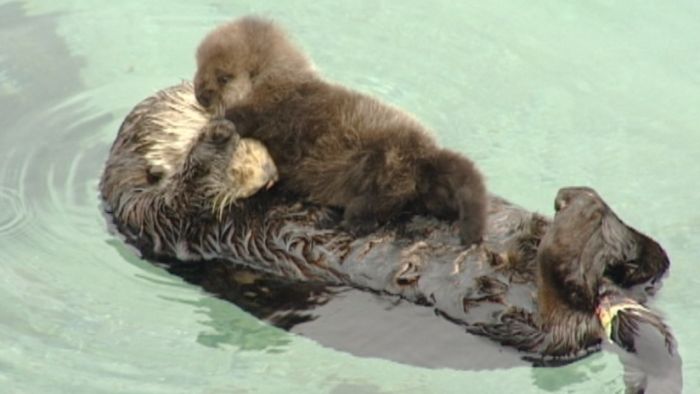-
Tips for becoming a good boxer - November 6, 2020
-
7 expert tips for making your hens night a memorable one - November 6, 2020
-
5 reasons to host your Christmas party on a cruise boat - November 6, 2020
-
What to do when you’re charged with a crime - November 6, 2020
-
Should you get one or multiple dogs? Here’s all you need to know - November 3, 2020
-
A Guide: How to Build Your Very Own Magic Mirror - February 14, 2019
-
Our Top Inspirational Baseball Stars - November 24, 2018
-
Five Tech Tools That Will Help You Turn Your Blog into a Business - November 24, 2018
-
How to Indulge on Vacation without Expanding Your Waist - November 9, 2018
-
5 Strategies for Businesses to Appeal to Today’s Increasingly Mobile-Crazed Customers - November 9, 2018
Baby sea otter and mom capture hearts everywhere
Marine animals come and go from the Monterey Bay Aquarium’s outdoor tide pool because it is connected to the ocean, and Sunday morning, a wild sea otter mother chose the tide pool as the place where she wanted to give birth.
Advertisement
California aquarium workers received an early holiday present: a newborn wild sea otter.
The aquarium says the female sea otter had been using the protected basin of the tide pool to take a break from the winter storms. Staffers were anxious because healthy otters don’t visit the pool that often.
The mystery was solved, this past Sunday around 8:30 a.m. local time, when staff “witnessed a BRAND NEW pup resting on her belly, being furiously groomed by a proud momma”, Monterey Bay Aquarium blog said.
“It was like, ‘Wow, ‘” aquarium spokesman Hank Armstrong said Tuesday.
The event drew crowds of staff, volunteers and, later, visitors to the aquarium’s back deck Sunday to watch the pair.
Mom has been grooming her baby, fluffing the pup’s thick pelt to keep the newborn warm and able to float. “We’re talking umbilical-chord-still-attached, whoa-is-that-yep-that’s-the-placenta new-born otter pup!”
Advertisement
Sea otters were once driven to near extinction in California because of fur trapping, which reduced their numbers to around only 50 individuals by 1938.





























